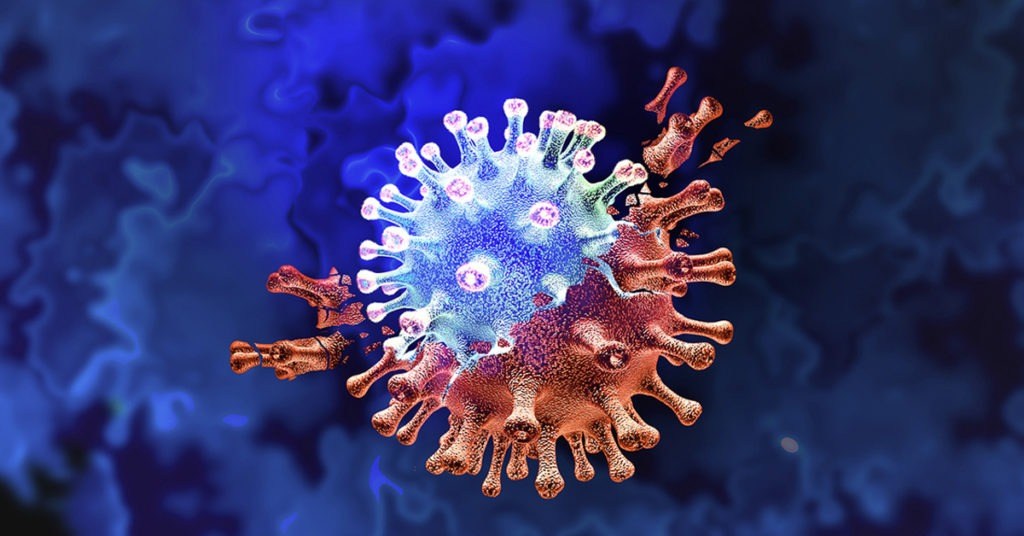What is Hybrid Coronavirus?

Introduction
Combined variants of SARS-CoV2, the culprit virus for COVID-19 illness, are now increasing in numbers in terms of their infection rates from person to person, and are rapidly circulating in different countries such as United Kingdom, US – California, India and Vietnam. These new variants arising can cause possible inflation of detrimental health risks globally. Recombination of these variants can be a compelling historical foundation of coronavirus’ evolutionary timeline.
Recombination of DNA Viruses
The fundamental biological process involved in combining portions of the virus is called recombination. In cytology, the study of cells, recombination is considered as a distinctive contributory in genetics. Two DNA molecules that are alike have been conceivable to reciprocate certain pieces of their structure. These result to “a stretch of DNA from one parental piece of DNA, followed by a stretch from the other,” yielding twisted variances between the two parent molecules. The outcome of these modified molecules that are inherited from each parent is a hybrid molecule.
The physiological process explained might sound a little too complex but recombination is already a customary scheme happening in the reproduction of complicated cells. This can easily be understood by a child’s set of chromosomes that are inherited from the child’s mother and father. Recombination can also be seen in simpler cells where altered genes were adapted into the genome of bacteria. Knowing that the molecules involved in the recombination are not selective to which DNA molecules they merge with, infected cells of the DNA virus are at times recombine if there are two or more virus strains that transmit a single cell to infection.
Recombination of RNA Viruses
Inquisitive on how these DNA viral molecules have been connected to coronaviruses following that their genomes are made up of RNA? The same biological processes also occur in RNA. They also create particular forms of genetic combinations. A coronavirus’ genome is composed of a single, long RNA molecule, which seems not to be suitable for recombination. However, a hybrid viral molecule is still possible to form by means of copying the RNA genetic material by an enzyme from one end to the other, resulting to multiple copies as it goes along. Though at certain times, the course of RNA replication can “stall and fall off” from the molecule where the original genetic code came from while it is still processing the newly and partially completed copy. In most of these cases, terminated replication crops up. But in some instances, it pushes itself and be able to connect to a new genome and utilize the hanging half as its combined copy.
It does not necessarily mean that the new molecule should come from the original copy. It just needs to be the same with the initial copy. Recombination among viruses takes place as long as they pass the infection with the corresponding host.
Hybrid COVID-19 variants
Recombination of viruses forms a hybrid molecule. Discovering different COVID-19 variants yield to higher chances of recombination. Further intensification of recombination means more possibilities of hybrid COVID-19 variants.
Fresh from the newsflash is a new coronavirus variant that is “a combination of the Indian and UK COVID-19 variants” detected in Vietnam. It is reported as a variant that is more transmissible and easily replicated than the other known types. According to Health Minister Nguyen Thanh Long, the Indian variant with noted mutations from a UK variant is a dangerous one. The World Health Organization (WHO) initial report expressed that B.1.617.2, an Indian variant with additional mutations, has been detected in Vietnam. Still, they have to conduct supplementary research for more detailed information.
Another hybrid coronavirus has also been detected last February 2021 in California, US. It was the result of recombination of B.1.1.7 variant discovered in the United Kingdom and B.1.429 variant originated in California. The said recombinant was noted to be the first hybrid coronavirus discovered in this COVID-19 pandemic. Because of its viral nature, in addition that it is also common among coronaviruses, it is already projected to transpire, although studies are still currently ongoing on its biological processes and possible outcomes.
Conclusion
Recent discoveries from COVID-19 are improving. There are newly found scientific analyses on its characteristics and mode of transmission. The medical authoritative bodies are also keep looking out to improve and find ways for the best evidence-based responses feasible in this time of pandemic. If you are still worried about contracting the COVID-19 disease, you can avail of telemedicine consultation at MyPocketDoctor. . The MyPocketDoctor has been actively delivering both health information and telemedicine services. You can certainly enjoy these conveniences right at your fingertips by downloading the MyPocketDoctor APP and talking to our team of doctors about your health concerns. MyPocketDoctor can be contacted through its Facebook page and/or agent chat on the website www.MyPocketDoctor.com. You may check the Frequently Asked Questions (FAQs) through this website.
REFERENCES:
www.cdc.gov/coronavirus
www.reuters.com/world
